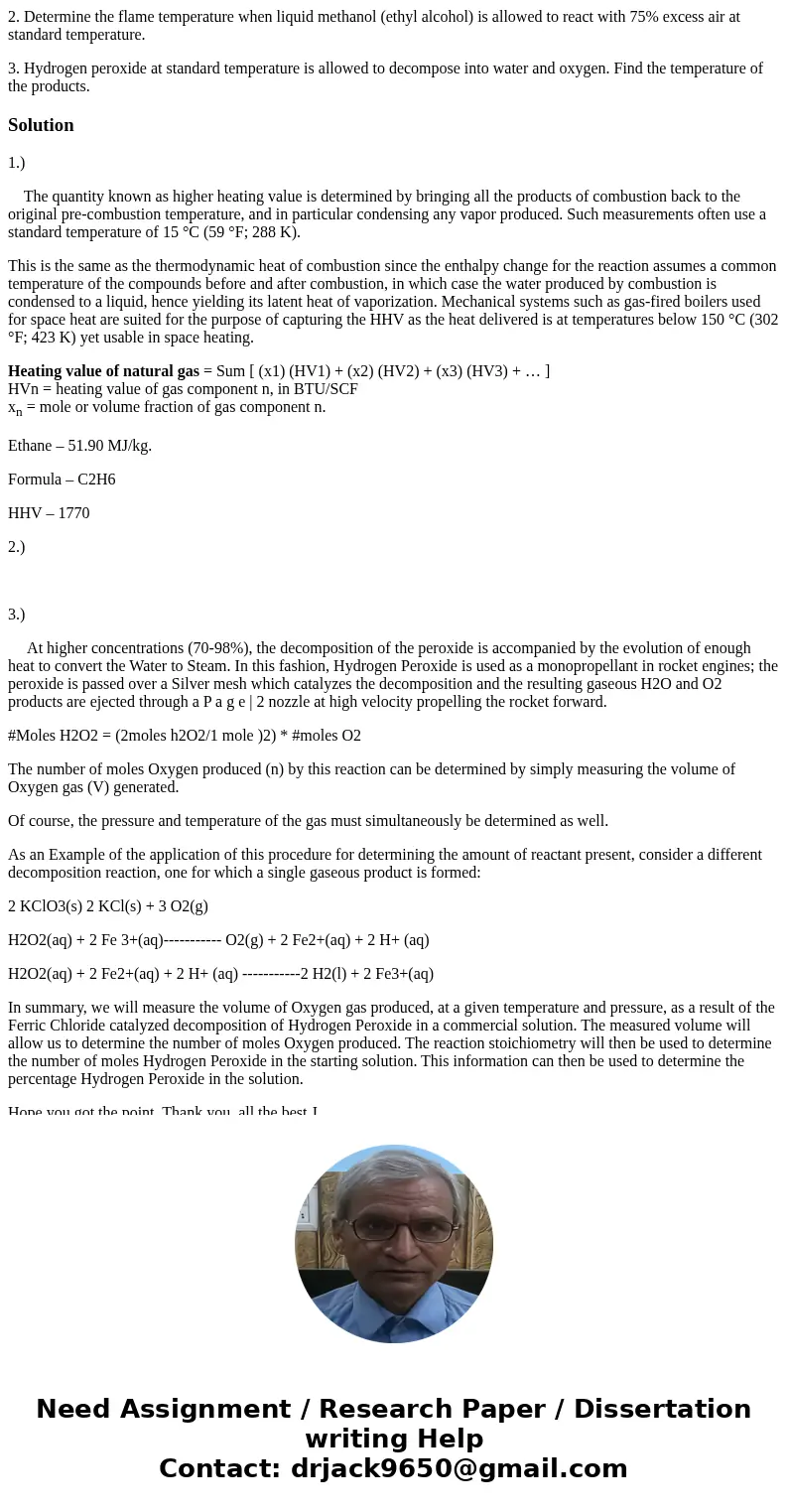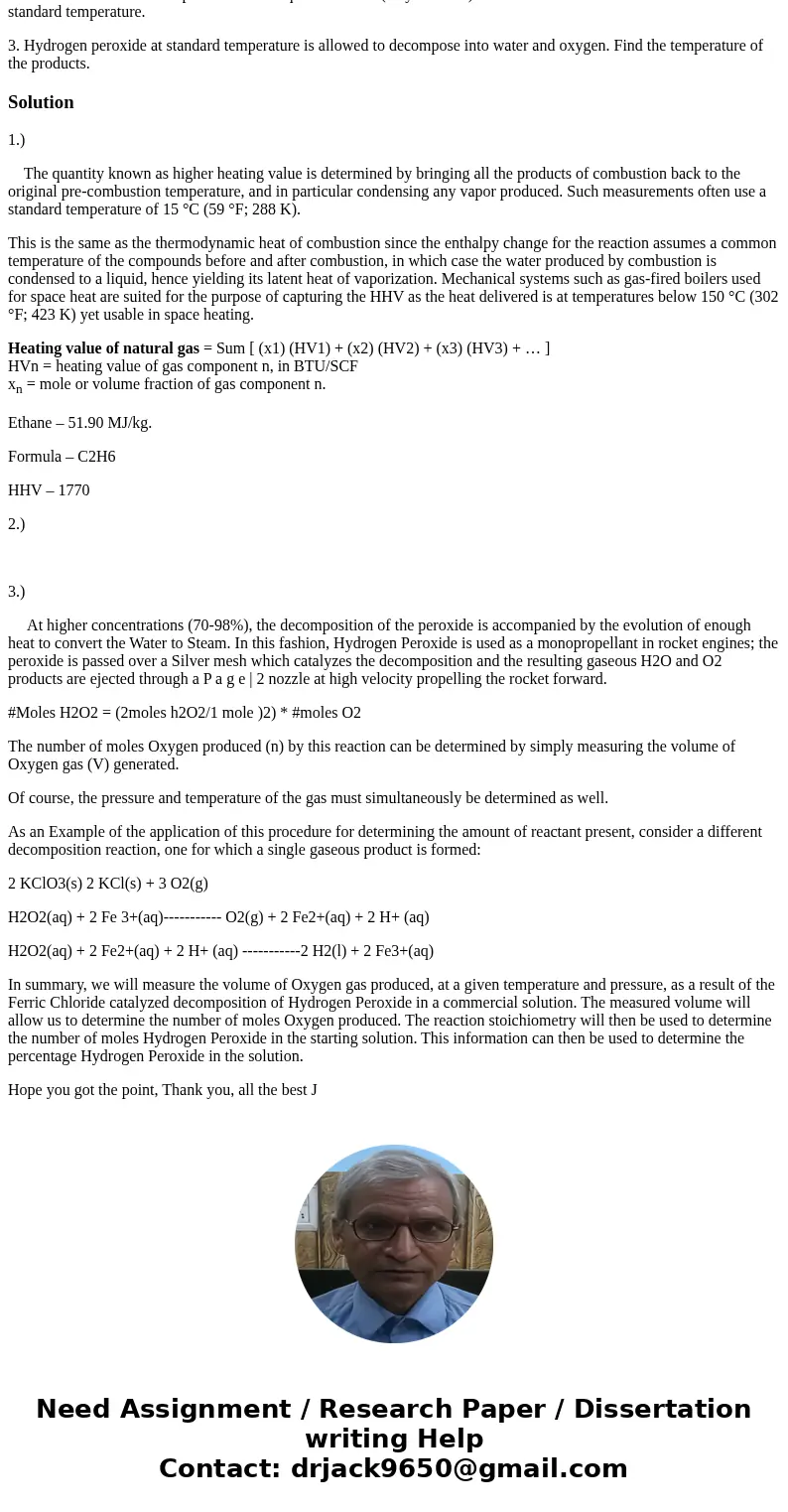2 Determine the flame temperature when liquid methanol ethyl
2. Determine the flame temperature when liquid methanol (ethyl alcohol) is allowed to react with 75% excess air at standard temperature.
3. Hydrogen peroxide at standard temperature is allowed to decompose into water and oxygen. Find the temperature of the products.
Solution
1.)
The quantity known as higher heating value is determined by bringing all the products of combustion back to the original pre-combustion temperature, and in particular condensing any vapor produced. Such measurements often use a standard temperature of 15 °C (59 °F; 288 K).
This is the same as the thermodynamic heat of combustion since the enthalpy change for the reaction assumes a common temperature of the compounds before and after combustion, in which case the water produced by combustion is condensed to a liquid, hence yielding its latent heat of vaporization. Mechanical systems such as gas-fired boilers used for space heat are suited for the purpose of capturing the HHV as the heat delivered is at temperatures below 150 °C (302 °F; 423 K) yet usable in space heating.
Heating value of natural gas = Sum [ (x1) (HV1) + (x2) (HV2) + (x3) (HV3) + … ]
HVn = heating value of gas component n, in BTU/SCF
xn = mole or volume fraction of gas component n.
Ethane – 51.90 MJ/kg.
Formula – C2H6
HHV – 1770
2.)
3.)
At higher concentrations (70-98%), the decomposition of the peroxide is accompanied by the evolution of enough heat to convert the Water to Steam. In this fashion, Hydrogen Peroxide is used as a monopropellant in rocket engines; the peroxide is passed over a Silver mesh which catalyzes the decomposition and the resulting gaseous H2O and O2 products are ejected through a P a g e | 2 nozzle at high velocity propelling the rocket forward.
#Moles H2O2 = (2moles h2O2/1 mole )2) * #moles O2
The number of moles Oxygen produced (n) by this reaction can be determined by simply measuring the volume of Oxygen gas (V) generated.
Of course, the pressure and temperature of the gas must simultaneously be determined as well.
As an Example of the application of this procedure for determining the amount of reactant present, consider a different decomposition reaction, one for which a single gaseous product is formed:
2 KClO3(s) 2 KCl(s) + 3 O2(g)
H2O2(aq) + 2 Fe 3+(aq)----------- O2(g) + 2 Fe2+(aq) + 2 H+ (aq)
H2O2(aq) + 2 Fe2+(aq) + 2 H+ (aq) -----------2 H2(l) + 2 Fe3+(aq)
In summary, we will measure the volume of Oxygen gas produced, at a given temperature and pressure, as a result of the Ferric Chloride catalyzed decomposition of Hydrogen Peroxide in a commercial solution. The measured volume will allow us to determine the number of moles Oxygen produced. The reaction stoichiometry will then be used to determine the number of moles Hydrogen Peroxide in the starting solution. This information can then be used to determine the percentage Hydrogen Peroxide in the solution.
Hope you got the point, Thank you, all the best J


 Homework Sourse
Homework Sourse